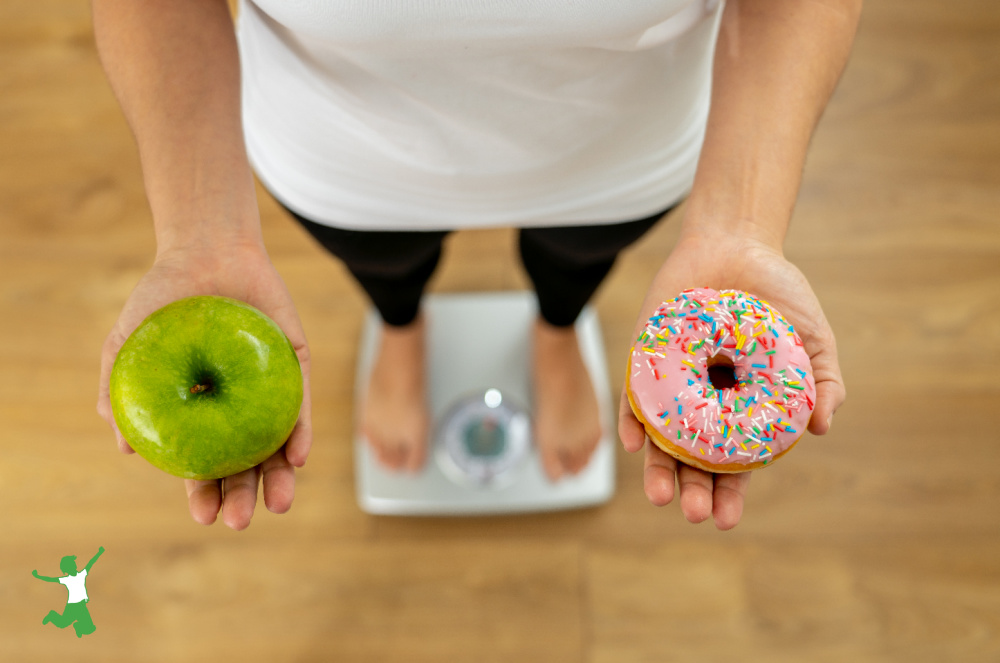How liver damage similar to alcoholics can be triggered from diet alone, even without ever drinking a drop.

It is well known that overconsumption of refined carbs and sugar can make you overweight with blood sugar issues.
Did you know that it can also give you a mangled, scar-ridden liver that is indistinguishable from that of a fifth of whiskey a day alcoholic?
It is estimated that over seventy million Americans suffer from nonalcoholic fatty liver disease. Most don’t even know it.
Nonalcoholic fatty liver disease is truly a silent epidemic growing in lockstep with the meteoric rise of Metabolic Syndrome.
It has a sinister set of symptoms intimately related to obesity, insulin resistance, high blood pressure, elevated triglycerides, and reduced HDL cholesterol.
Dr. Samuel Zelman MD first brought attention to this disorder in 1952. He noticed the disease in a hospital aide who drank 20 or more bottles of Coca-Cola each day.
Given that this disorder was basically unknown just 60 years ago, there can be no doubt that nonalcoholic fatty liver disease is a disease related to overconsumption of the “displacing foods of modern commerce” written about by Dr. Weston A. Price in his book Nutrition and Physical Degeneration.
Nonalcoholic Fatty Liver Syndrome
In 1980, the Mayo Clinic produced a report detailing “nonalcoholic steatohepatitis” or “NASH” to describe the disease.
Giving the nonalcoholic form of fatty liver disease an actual name proved helpful as it gave physicians a much-needed awareness of this disorder.
Prior to this report, physicians were known to accuse patients with the disease of lying about their alcohol consumption habits.
Increasing scrutiny of nonalcoholic fatty liver disease since 1980 has repeatedly confirmed the relationship between this disorder, obesity, and diabetes.
Most alarming is the fact that this disease is present in up to 75% of obese individuals, mostly undiagnosed.
The initial trigger for this disorder appears to be nutritional imbalance brought on by a diet high in calorie-rich, factory foods.
Processed foods send too much energy to the liver without sufficient nutrients to process them.
Overconsumption of polyunsaturated vegetable oils which promote oxidative stress and inflammation enhances the vulnerability of the liver.
Choline to the Rescue
Choline deficiency contributes greatly to the development of nonalcoholic fatty liver disease.
This water-soluble nutrient is usually grouped as one of the natural B vitamins.
It is primarily found in liver and egg yolks. Ironically, the majority of people shun these very foods!
Choline is necessary to produce a phospholipid that the body requires to export fat from the liver.
Thus, this nutrient can prevent the development of fatty liver whether the cause is sugar, refined flours, omega-6 polyunsaturated fats found in excess in processed foods, or alcohol.
The amino acid methionine acts as a precursor to choline.
Therefore, this nutrient can also be helpful with prevention depending on the ability of the individual to make that conversion.
It seems genetics plays a role given that Asians seem better able to make the conversion than Caucasians.
Drunk Without Drinking?
Natasha Campbell-McBride MD writes about a related phenomenon in her book Gut and Psychology Syndrome.
Adults and children with an overgrowth of Candida (pathogenic yeast) in their gut can appear permanently tipsy due to the hijacking of glucose by Candida which digests it in a manner called alcoholic fermentation.
Candida and other pathogenic yeasts in the gut convert dietary glucose into alcohol and the byproduct acetaldehyde. The symptoms of drunkenness are particularly pronounced after a meal heavy in carbohydrates.
Candida would consume these carbohydrates (refined carbs and sugars) and produce alcohol.
Therefore, despite the fact that these adults and children never consumed any alcohol whatsoever, they would nonetheless suffer from the effects!
Alcohol has a very small molecular structure and so passes very easily into the blood and any other barrier in the body.
As a result, a pregnant woman with Candida overgrowth is at particular risk. The alcohol from the pathogenic yeasts in her gut can cross the placenta to her unborn child.
Alarmingly, alcohol would also be present in her breastmilk potentially resulting in a tipsy infant!
Symptoms of Chronic Alcohol from Pathogenic Yeasts
According to Natasha Campbell-McBride MD, the effects of a chronic presence of alcohol in the body from overconsumption of refined carbohydrates and sugars as well as an imbalanced gut dominated by pathogenic yeasts include:
- Impaired coordination, lack of self-control, impaired speech development, aggression, poor memory, and/or stupor
- Reduced ability to produce stomach acid (higher predisposition to intestinal illnesses of all kinds)
- Degeneration of the pancreas which further impairs digestion
- Malabsorption of nutrients from food
- Nutritional deficiencies – in particular, the natural B vitamins and real vitamin A
- Immune system impairment and damage
- Liver damage (as in nonalcoholic fatty liver disease – previously described)
- Muscle weakness and muscle tissue damage
- Altered senses from peripheral nerve damage
Summary
While shocking and seemingly far-fetched, a diet high in refined carbohydrates, polyunsaturated vegetable oils, and sugar and the associated gut problems that go along with it can indeed result in being chronically drunk.
The corresponding physiological effects of alcoholism can manifest even if a single drop of beer, wine, or hard liquor is ever consumed during an entire lifetime!
It seems clear that a return to the traditional diets of our ancestors is imperative in halting this devastating epidemic and its lifelong impact not only on ourselves but on the most vulnerable among us as well – our children and grandchildren.
References
(1) Nonalcoholic Fatty Liver Disease: A Silent Epidemic of Nutritional Imbalance by Chris Masterjohn
(2) Gut and Psychology Syndrome, Dr. Natasha-Campbell McBride MD ( The Gut-Brain Connection).








My problem is that we do allow our kids to trick or treat just to be with their friends and have a good time. But all the candy they bring home! Mountains of it. I let them keep a few pieces and the rest we take to the dentist who pays the kids $1/lb for it.
I went to Oriental Trading’s website and bought a bunch of non-candy things to give out — Halloween bubbles, pencils, bracelets, etc. I am excited feel good about what we hand out.
Hi Sarah, Thank you for making me aware of this. I have an overgrowth of yeast in my system (continually getting thrush) and I am feeling overwhelmed about what to do about it. I eat a lot of yogurt, kefir and take a probiotic. I am in the process of taking all sugar out of my diet. Is there anything else I need to avoid? One source said to avoid anything fermented. I’m not sure if I buy that. If you could give me some direction I would be so grateful. Thank you so much.
Isnt it mainly the fructose (either free as in HFCS or agave sirup, or from sucrose) that damages the liver due to the specific fructose metabolism?
Fructose damages the liver but nonalcoholic fatty liver disease appeared on the scene long before high fructose corn syrup so there are other causes .. simple overconsumption of sugar, refined grain based carbs, and polyunsaturated oils.
What a fascinating article!! Thank you so much for sharing this info.
It’s amazing how many health problems are linked to what we put in our mouths. Just goes to show that the remedy is most often found there as well!
Interesting. I read the article on the WAPF site that you linked to in your sources. Then read what the Mayo Clinic had to say. Talk about a conflict in stories. The Mayo Clinic recommends a diet low in saturated fat and with plenty of whole grains, etc. (The usual “healthy” diet”).
I have been having problems with pain on the upper right side, and I suspect this might be the culprit. Might be time to have it checked. WIsh I could find a WAP doctor.
Smiles,
Karolee
I just had a weight loss operation for morbid obesity. Part of the treatment plan before the op is to go on a very low calorie diet to shring the liver to make it easier to work around. My liver had only shrunk slightly. I hadnt cheateatred etc.. but my specialist told me it looked like I was a hard drinker. My liver wasnt a happy or helathy liver at all. Yet I showed NO outward signs. Apparently its not that uncommon for obeisity surgeons to find this on a daily basis.
I havnt touched alcohol in 5 years except a glass once a fortnight in a family food recipe.
The solution can be simple. Many people have seen their symptoms disappear by going on a WAPF style diet, and a diet like that will avoid the eating patterns that seem to cause the disease.
Wow! So maybe this is why I’ve felt a “little odd” and even somewhat drunk after having too much bread in the past. Scary…
I get dopey after too much sugar or bread too.
Thank you for this article! I so get this way when I consume carbs and I keep trying to get rid of candida. !! I’m glad to understand why and will have to get this book. I’ve been putting off going on the GAPS diet with a family (including 3 teens to feed) it’s difficult to follow.
Lori